Saving butterflies, moths and our environment
Celebrating our 40th Anniversary!
1982 - 2022
Purple Emperor Caterpillars. I went to check the five Purple Emperor caterpillars that I have been following this winter, only to find, that sadly, four of them have been predated, probably by Blue or Great Tits. The one survivor had moved about 500mm from an exposed position to the relative safety of a fork.
All that was left of the others was the silk pad they had laid down to hibernate on.
Makes you wonder how any survive at all? [Posted by Mark Tutton]
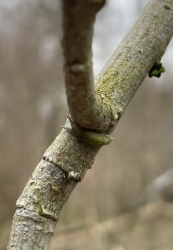 | 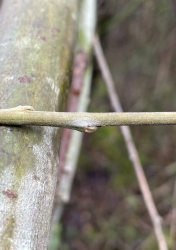 |
| Lone Survivor Photo © Mark Tutton | Silk pad remnants Photo © Mark Tutton |
Sighting of Peacock butterfly this morning, Bishop's Waltham. Peacock butterfly landed on my pink hellebore about 11.00 am My garden is near Priory Park in Bishop’s Waltham [Posted by Lesley Millard]
White-letter Hairstreak larva at Hursley. Encouraged by yesterday's success when searching for White-letter Hairstreak eggs at a site near Hursley, I returned to make the most of today's sunshine and better photographic conditions. Also, given that a few of the eggs seen yesterday had hatched, I thought I'd raise the degree of difficulty and search for one of the newly hatched first instar larvae. After half an hour of searching, I'm pleased to say I was rewarded with finding a tiny White-letter Hairstreak larva feeding on the top of a newly opened Wych Elm flower bud. For information, I found nine eggs today, five of which had hatched. [Posted by Andy Barker]
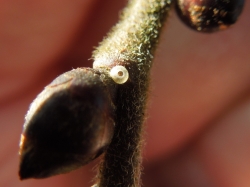 | 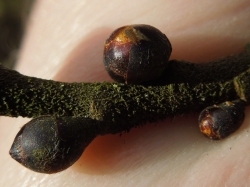 | 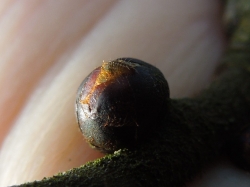 |
| White-letter Hairstreak egg (hatched) Photo © Andy Barker | WLH (1st instar larva) on elm bud (top) Photo © Andy Barker | WLH (1st instar larva) close-up Photo © Andy Barker |
White-letter Hairstreak eggs at Hursley - update. Further to my observations of White-letter Hairstreak eggs near Hursley, on 28 January, I re-visited this morning with three other butterfly enthusiasts. I'm pleased to report that during a 30 minute search we were able to locate 15 eggs. At least three of these had recently hatched, as shown by the neat circular exit hole in the crown of the egg (see image below). Flower bud-burst had just started (see below), which is critical for young larvae. The larvae don't eat the egg-shell, but move to the nearby bud to burrow in and feed, before moving onto leaves at a later stage in their development. [Posted by Andy Barker]
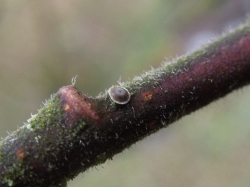 | 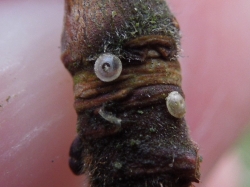 |  |
| White-letter Hairstreak egg Photo © Andy Barker | Freshly hatched WLH egg (upper left) Photo © Andy Barker | Wych Elm bud-burst Photo © Andy Barker |
Red Admiral butterfly nr. Totton/Ashurst. A single Red Admiral was spotted on my flowering Prunus Blireiiana at 14:30 12-2-24 at SO40 7ET It didn’t settle long enough to get a photo. [Posted by Clive Rutland]
Red Admirals at Hillier Gardens. Today's lovely winter sunshine has clearly encouraged many butterflies to make the most of the mild conditions. During a visit to the Hillier Gardens, Braishfield, I was very pleased to see a group of six Red Admirals taking nectar from a single Edgworthia chrysantha plant in the 'Winter Garden', and a further two Red Admirals nectaring on Viburnum bodnantense. [Posted by Andy Barker]
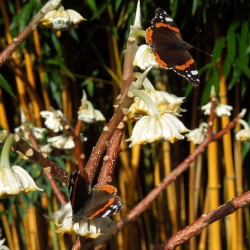 |  | 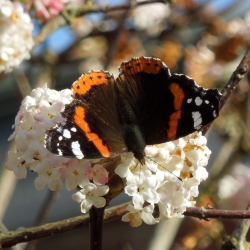 |
| Red Admiral (2) on Edgworthia Photo © Andy Barker | Red Admiral (underside) Photo © Andy Barker | Red Admiral on Viburnum Photo © Andy Barker |